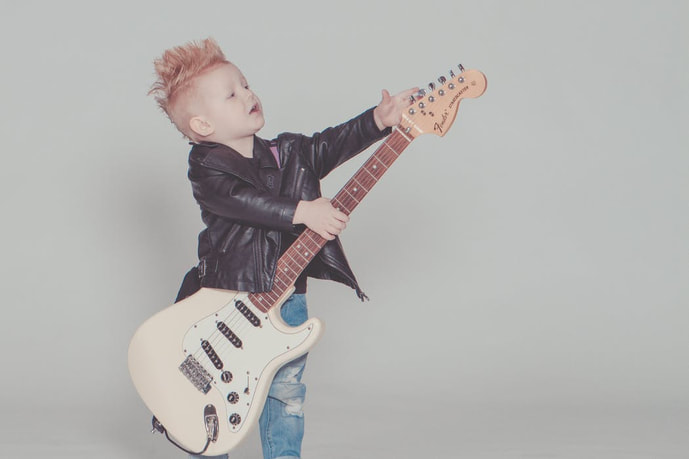|
1/23/2018 1 Comment 5 Tips for Easier SingingThe ability to sing is a human birthright, and something we start doing before we have words. As we grow older, this natural access to our voice narrows, often in response to our efforts to gain 'technique' and learn how to sing 'better'. The Alexander Technique can be an essential tool for recapturing the balance between ease and refinement. Here are a couple of ideas to play with that will get your inner songbird going. 1. Singing Is A Whole-Body ExperienceThe more trained a vocalist I work with, the more likely they are to have their attention concentrated on a small section of their body--their lips, tongue, jaw, soft-palette, and throat. It is necessary to focus on these areas when you are training in order to refine vowels, open up tone, get rid of pushing etc. The danger of this is that when focusing on these areas, we go dead to the rest of our body. It is my experience that when the whole body is set up well and the breath is moving with freedom, a lot of problems in the articulators and the complex mechanisms of the throat and mouth release on their own. Let's look at a couple of points that will help to expand this idea for you. 2. Support Is Everything--But Not the Support You ThinkSingers are all about breath support. This sometimes mistakenly makes us try to push the breath out (usually tensing our abs, backs, and shoulders to do so), as if we have to squeeze our bodies tight to support the breath's movement. My wonderful teacher Liz at the Voice Lab likes to say that it is a misleading term--it is the breath that supports the voice, not our muscles that support our breath. If you tense to try and push breath out it actually results in trapping the flow of air and as a result the parts of the upper respiratory system engage to compensate. True breath support is a release that allows the breath to flow without restraint. A support relationship that IS important is the way your body meets the ground. When you stand and sing, is the weight more in your heels or in your toes? The majority of people I work with have their weight committed backwards into their heels. This is a symptom of the whole body arching back, particularly the head. As a result, the muscles of the torso and legs tense to keep the body from falling backwards, constricting the breath and tightening the larynx and throat against each other. As an antidote for this, try relaxing your neck and letting your head float gently forward and up (easier said than done, you can see this blog to help), and let the weight shift slightly forward at your ankles until you feel some weight in the big toe-ball sides of your feet. Make sure you release your knees (try softening your inner thighs) a bit when you get there, or else you will feel as if you are falling forward. It also helps to have a supportive width to your feet--if your feet are too wide you won't feel any weight in the little toe side, if too narrow there will be no weight in the book toe. It can be amazing how a sound can transform with a better support relationship with the ground is achieved! 3. Breathing is DimensionalMost of us know that we are trying to bring breath deep into our bodies when we sing. However, most of us try to primarily draw breath into our front. This often leads to us arching our body back (see point #2) and drawing breath shallowly into our chest in order to feel like it is going deep. There is a better way. Many people are surprised to hear that a majority of of breathing room is not in our front, but in our back. There is simply more lung tissue there, and the 3 dimensional movement of the ribs actually favors the expansion of the back and sides rather than the rise and fall of the sternum experienced in the front. Allowing the ribs to gently swing in all three dimensions (a full circle around the body, as well as up and down) can provide an antidote to this, as long as you resist the temptation to arch to suck breath in. The bubble exercise is excellent for expanding our attention in this fashion. 4. Exhales Trigger InhalesThis one is potentially controversial and requires some nuance. When we are told to take a deep breath, we usually focus on the inhale. This attempt to pull breath in can activate the accessory muscles instead of the diaphragm and lead to some of the problems discussed in #3. The best way to activate the diaphragm is to exhale to the point where the diaphragm activates and 'does' the inhale for you. This can be a complex process and is best left to an experienced teacher, but once learned it should become an integral part of your vocal warm-up. In performance, you can try playing with this in a simple way--before the first in-breath of your piece, simply gently exhale to make space for it. As you work breath to breath in your piece, making sure you aren't leaving a cushion of air as 'insurance' in your lungs at the end of each phrase will help you get fuller breath to support your next phrase. 5. Will Getting 'Serious' About Your Music Will Help You Sing Better?Often, we think the reason we aren't progressing as a musician is because we aren't trying hard enough and we need to get 'serious'. Here's what getting serious leads to: a tight neck, jaw, back, and face and all of the problems seen in #1-4. If you lose touch with the primal joy of singing it is the first thing you must rediscover if you want to be the best vocalist you can be. This non-technical advice will reap copious technical rewards: your body will relax, your sound will immediately become fuller, easier, and richer.
Never let this be the last step: let it be the first. Check Out Our Workshop for Musicians at the Old Town School of Folk Music
1 Comment
1/16/2018 0 Comments Body Branding and SuccessWhat does your body language say about your business? Does your posture undercut or serve your messaging? How do you hold yourself in the boardroom, with clients, when networking?
If you haven't considered these questions, you might be in need of some Body Branding. Body Branding is a process by which you can become aware of how your postural, gestural, and expressive habits interact with your efforts to communicate with co-workers and customers and retrain these habits to align with your goals and vision. An example--is you brand meant to engender trust, but when you speak to people you lean back with your weight on your heels, your chest out, and your body gently falling backwards? This might have an unintended distancing effect that will make clients feel uncomfortable with you without knowing why. Or when you try to appear confident, do you push your body up, gesture out, and lean in towards them? All of these indicate insecurity and aggression and will unconsciously undercut your intent. These are negative examples, but when your Body Branding is on point it can be a powerful tool for converting sales, building relationships, and being comfortable in your own skin. If you want to feel relatable speaking to a small room, try sitting instead of standing, turn the chair backwards, lean gently forward and allow a slight rounding in your back. You will effortlessly project intimacy and sincerity. One of the reasons why strategies like this have an impact is because of the primal social cues we send using our body (hence the old adage that communication is 90% non-verbal). Another reason is because of mirror neurons--when we interact with someone, our brains literally 'try on' their body language to see how it feels and reads intent using it. Both of these things have an out sized effect on your personal brand and how it interacts with your larger message. It only takes a few coaching sessions to create and implement a personal strategy to get your body on board. It is important to know that it is not just about knowing the right and wrong things to do--it is about rewiring your habits and making them animated and flexible so they won't appear stiff and uninviting. Though in person sessions are always the best option as they allow us to use bodywork to assist the habit change, online lessons are a great way to get coaching on this if you are a busy professional without a lot of extra time on your hands. Whether you take on this work or not, I hope this gives you some food for thought on how you show up in the world. Playing guitar is hard. These tips can help. 1. Don't Fall Back to Support Your Instrument--Free Up Into ItGuitars are heavy, especially acoustic guitars. It is tempting to bend backwards to help support their weight. As a result your back with start to contract which can cause shoulder tension and finger control issues, as well as breath support problems if you sing while you play (plus it doesn't feel good). Instead, think of your body moving forward in up in opposition to the weight of the guitar--it will feel almost like you are doing a shared weight exercise with it. It will be helpful to have your support well set up--if you are sitting, see if you can have the balls of your feet on the floor relatively close to your chair (I recommend a simple musician's stool). If standing, make sure you have some weight in both the heel and ball of both feet (including the big toe side), and consider playing in a subtle 'lunge' position. 2. Don't Fret With Your NeckAs a self-taught guitarist, this has been something that has been really difficult for me: only look at the fret-board when you need to. When we are learning, it is easy to spend all of our time with our head craned towards the fret board to make sure we are doing what we think we are with our hands. Once we get going, this creates a habit of pushing your head off your spine to see what your hands are doing. This tightens your torso, tenses your shoulders, crunches your larynx, and generally makes guitar playing less fun. It can feel ponderous at first, but slowly start to nurse yourself off this habit and try to look up and out as you play. Of course, that doesn't mean you never look down--just try not to get stuck there. One thing I find helpful for this is looking down as much as possible with just my eyes rather than bending my neck--it helps me quick reference without getting to out of sorts. Plus, it is great for keeping sound contant if you have to sing into a mic while you play. 3. Breath Like You Are SingingSingers are aware of how important breath support is, but string players often don't know that it is just as important for them. The reason why is simple: when your muscles are oxygenated, they relax. When your system doesn't have enough air, it tightens up. Rather than focusing on gulping air in, try this: as you play, exhale gently through each phrase. And the end of each phrase, open your mouth and allow breath to flow in. You should feel your ribs move in your back, and be careful of tightening your abs or letting your head pull back as you inhale. The strange side effect is that you will fine your rhythm becomes more steady, your phrases more musical, your fingers more precise, and your muscles more relaxed--everything will start to feel much more effortless. Plus, you might find this strategy helps you with your stage fright!
Check Out Our Workshop at the Old Town School of Folk Music! |
Thoughts on what is going on in the work and the world right now. Many posts to come. Archives
June 2021
Categories |



 RSS Feed
RSS Feed